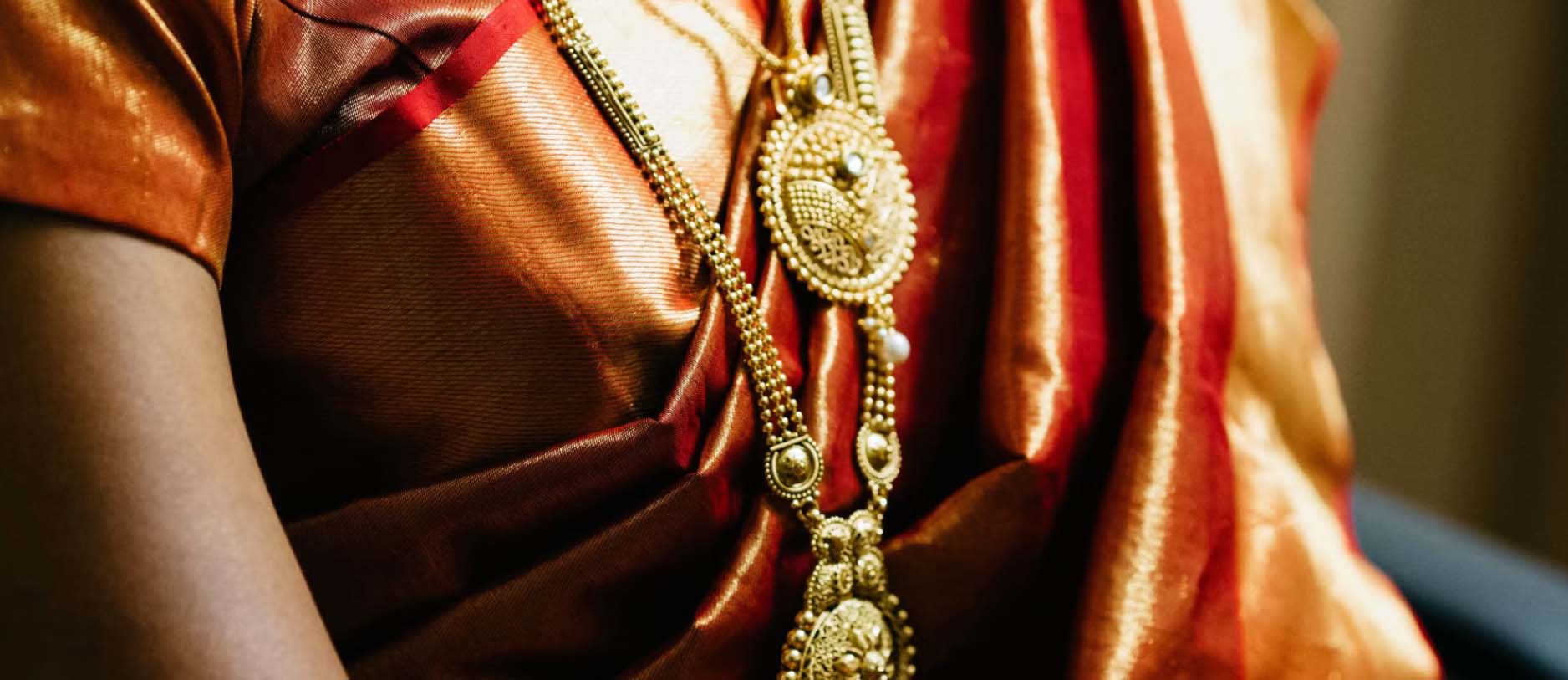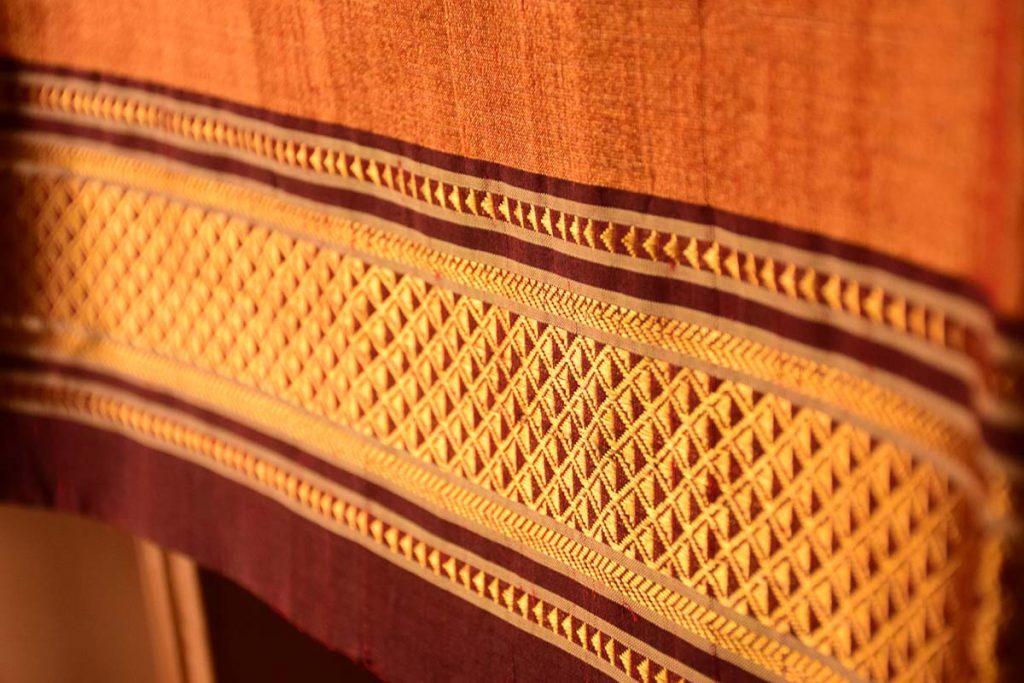
Indian Silk
Indian silk has long been part of the life and culture of Indians.
Traditional weaving methods are still employed in silk centres all over the country and weavers continue to produce fine silks for many uses but particularly the elegant traditional Indian Sari.
In India the sari is almost synonymous with the word silk. It has been the traditional garment of Indian woman since time immemorial.
Eastern Silk’s beautiful products are born in the heartland of fine silk, Varanasi, in Northern India. In Varanasi and its surrounding villages, traditional hand weaving methods are still practiced to produce the elegant fabrics, delicate embroidery and exotic beading so evident in our range.
Many of the methods and traditional patterns have been passed down through countless generations of craftsmen.
We take great care in selecting our fabrics, homewares and accessories to bring you an exotic touch of India. Please enjoy.
About Our Silks
Dupion Silk Plain Colours
Dupion silk is produced in India and similar to Thai Silk or the Chinese Shantung. Dupion silk is woven from the cocoons of two silk worms that have spun their cocoons together. The name dupion or douppioni refers to this ‘doubling’ effect and comes from the Italian ‘duplicato’. The fabric accepts dye hungrily and the result is a fabric of vividly, intense colour. Many of the colours in our range of dupion silk are created by using a shot weave, i.e. where the warp thread is a different colour to the weft thread. The result is a fabric with colours that seemingly dance before your eyes. Dupion silk is the first choice of designers for fine quality bridal and evening wear.It is suitable for curtains when used with 100% block- out lining.
Silk Chiffon
Silk chiffon is woven from a twisted mulberry yarn which results in a fine, delicate, flowing silk fabric. Perfect as an overskirt on bridal, evening and christening wear.
Silk Satin – Plain
Crepe backed silk satin is made from mulberry silk and woven as unbleached fabric. After weaving the silk fabric is bleached then dyed to bring you the softest fabric with the most lustrous colour. Silk satin will be perfect for bridal and evening wear and also makes a great lining under our selection of embroidered silk organzas and silk georgettes. Dry cleaning is recommended but as the fabric is piece dyed after weaving it can be washed with care, in cold water, using a mild detergent or baby shampoo.

Silk Organza
Woven from the finest unbleached mulberry silk yarn, this classic silk organza fabric is great teamed with bold silk lining for an elegant gown. It must be dry cleaned due to the fragility of the yarn and the openness of the weave.
Silk Georgette Plain
Silk georgette has a distinct grainy texture due to the semi-twisting its yarn during weaving. Our silk georgette is woven and then piece dyed to create a soft, flowing silk fabric for blouses, tops, evening wear and bridal.

Silk Tissue Organza
Silk tissue organza is made with silk and metallized threads and can be flat in weave but is often a crinkly fabric. Its metallic lustre gives beauty wherever it is used. The fabric is best used as a stole or wrap due to its limited ability to be cleaned. If used in a garment it requires a lining to reinforce it. The fabric does not dry clean and cannot be washed so it is best not to get it dirty!
Matka
Silk Matka is a heavy weight silk traditionally woven in Bihar North India. It has a thick, earthy weave due to the heavy silk yarn used in its manufacture. It is made from Mulberry Silk and is distinctive due to its slubby, irregular weave. It makes great suits and jackets and is also good as an upholstery fabric. It softens after washing, but may also shrink. Pre washing is recommended before making up your garment. Matka silk can be dry-cleaned.

Tussar Silk
Tussar is a lustrous, crisp silk, which is typically golden in colour. The silkworms used to produce this silk feed naturally on trees in the local forests and their cocoons are then collected for use in spinning. Tussar Silk is also known as Wild Silk.
Silk Care
Silk is protein fibre, more similar to wool than to cotton. It is very similar to human hair. Remembering this will help when you think about how to wash or clean it. Silk is extremely strong but repeated exposure to the sun will erode the fibre.
In general, silk can stand heat (it is subjected to very high temperatures when the gum is removed, and most silk dyes are steam set), but it does not do well in extreme changes of temperatures, or in overheating through excessive drying.
Some silk fabric and clothing can be hand washed if done carefully. For best results use a mild detergent (like Wool Wash or even Baby Shampoo) and lukewarm water, then roll the fabric in a towel to absorb the water. Do not twist — just as you wouldn’t twist or pull your hair. Iron dry on a low setting. If you are unsure about washing, check with the manufacturer when possible. Many manufacturers will tell you to dry-clean because it is simpler and yields better results. Wherever possible, you may want to check a swatch first.
Structured silk garments and fragile fabrics should be dry-cleaned to prevent damage. Multi-color prints or hand-dyed scarves may need to be dry-cleaned to prevent running. You may wish to dry-clean your garment the first time. The steaming process used at the dry-cleaners may also help to further set the dyes.
Moths will attack silk, as well as wool. Store your silk clothing appropriately. As with all fine fabrics, if you plan to store for a long time, you will do best to store in a cotton pillowcase or otherwise surround the silk with a fabric that can breathe. Avoid storing in plastic since this can trap moisture, which can lead to yellowing or the accumulation of mildew.
Never use chlorine bleach on silk. It will yellow the fibre and may cause it to breakdown more quickly.
The colors in your silk will undoubtedly fade over time, even when permanent dyes have been used and they have been professionally set. Reds are particularly sensitive to running and fading. Store your silk away from exposure to light, especially direct sunlight. Washing silk may also cause excess dye to discharge. When in doubt, dry-clean the garment or item.
